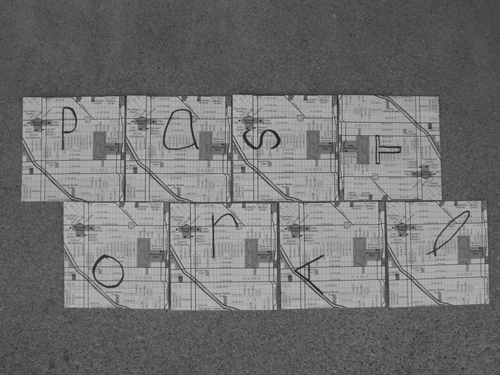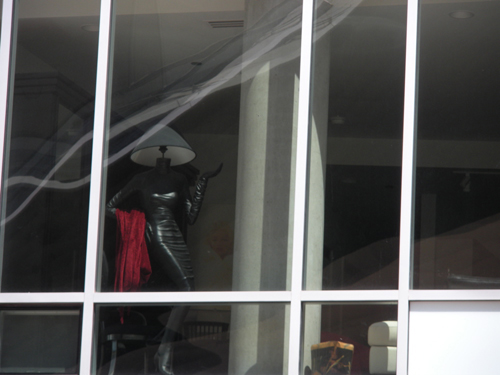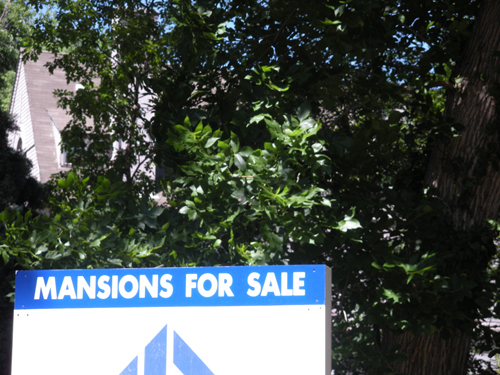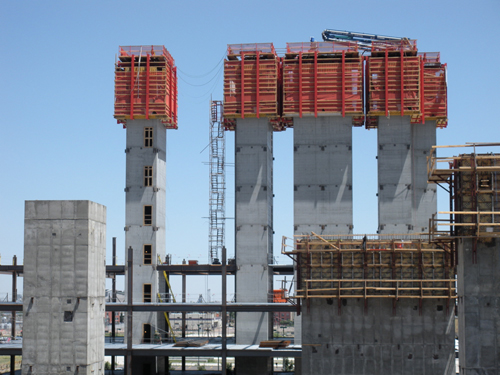Can you build a vocabulary of faith out of a rhetoric first made of dread?
Fanny Howe
I carved a large “P” into a medium-sized American city today in an attempt to inscribe language into a non-linguistic space, one in which, despite the billboards, liquor stores, gas stations and theaters, temples, churches and restaurants, strip clubs, bus stops, and the Planned Parenthood office I happened upon, any possibility of tracing a curve with one’s steps has been rigorously and systematically thwarted.
Had it not been for parking lots, alleys, playgrounds, unlocked gates, and my willingness to cross busy streets at places other than the corners, I would not have been able to carve as round a “P” as I did. That I could not carve as round a “P” as I would have liked is the reason I left the house in the first place, walking seven blocks north, then curving southeast for four and southwest for four more.
From space, my letter would be difficult to see. But of course the letter, unless you’re willing to follow the pattern of my shoeprint in the snow, has already disappeared. And though I can assure you that I did indeed carve such a letter in the city, reading about it here, on the page, is the only proof of its existence.

New York’s city planners did a remarkable thing in 1811: they decided that all of the city’s streets north of Greenwich Village would run in straight lines. More remarkable yet, since they were not the first to employ the grid, they decided to flatten the island, which was then relatively hilly. When, years later, Calvert Vaux and Frederick Law Olmsted began to build Central Park, they had to reconstruct the hills the city’s fathers had previously flattened.
A system of intersecting lines was carved into the earth, creating the endless avenues Sartre is said to have found so fascinating. Creating, also, though this could not have been foreseen as a consequence, a fully rationalized, yet totalitarian existence in which each line of each wall of each room in each building in each block of that square city can curve only in rare instances—when someone revolts against the straight lines, right angles. When someone decides that, like a river, they want to wend.
In a curious connection, it was determined at one point or another in our common history that all locations on the curved surface of the earth could be designated, mapped, by the imposition of an invisible grid of longitudinal and latitudinal lines—the central line of longitude running in perpetuity, and by international agreement, through Greenwich, England.
So we speak of carving out time, of carving out space, and these carvings are the grids overlaid on our days. But time does not move according to a grid. Nor, for its part, does space. Neither is orderly. They curve. They decussate. They wound.

Cosmologically speaking, the world formed along a wound: astronomers report having seen “in the patterns of galaxies scattered across the night sky, the vestiges of sound waves that rumbled through the universe after the Big Bang.” Stars and galaxies, they say, formed along the ripples of those waves as they reverberated through space. An explosion traced the route the universe would wend.
But suppose it was another sort of explosion that bade me begin my walk. A boy in dirty corduroys walks up to me and says: “give me a dollar for a bottle of coke.” And when I say I’m sorry, which is an inadvertent kind of lie, I hear him say Muerte as I step onto the bus. Die, in other words, you scum.
Something moves in me, that sound of death’s desiring, and what it does as it twists down my ear canal and into my brain does not so much resemble the dropping of that empty, unbought bottle along the cobbled street, and so breaking, as the sound of a fist cracking a bone—say, in the cheek.
At my desk months later, I repeat the word die over and over, as if to inscribe in my mind that sound hovering in the afternoon air, like so many misunderstandings. I would make a world from that sound, or from my mouth’s tracing of it, but what kind of a world would it be?

If we were to remake the world in the image of the wound, would we have our choice of wounds? The boy’s wound was the world’s, but was the world’s the boy’s? Barthes writes:
for us the “subject” (since Christianity) is the one who suffers: where there is a wound, there is a subject: die Wunde! die Wunde! says Parsifal, thereby becoming “himself”; and the deeper the wound, at the body’s center (at the “heart”), the more the subject becomes a subject: for the subject is intimacy (“The wound…is of a frightful intimacy”). Such is love’s wound: a radical chasm (at the “roots” of being), which cannot be closed…
The modern city, as Baudelaire knew, opens this chasm, “love’s wound,” in us.
The city: scarred space.
But a poem is also a chasm “which cannot be closed.” Robert Creeley once told the story of a woman who approached him after a reading only to say, charmed and all to meet him, that she couldn’t get around the violence in his work. When he insisted that he did not write violent poems, that the woman was mistaken, she cited as evidence his poem “For love—I would/ split open your head and put/ a candle in/ behind the eyes.” How to explain, Creeley wondered, that the gesture the poem makes is anything but violent. That the woman had seen a wound, but it wasn’t the poem’s, that the poem was itself the affliction of the wound, a record of its infliction. Its violence consisted of this: to be violated, to violate with its own violation.
A radical chasm, the poet’s death is on display—in a diorama as it were. Enjambed or not, upon the page: the lines like scars, since the world accretes in our wounds. But what sort of world do I imply when I say—and this to the dust, since I am still alone—die, die, die, die, die?
Is that a candle there, behind my eyes?

Giorgio Agamben writes that the poem is a product of a tension between sound and sense—that an opposition inheres between a metrical limit and a semantic one. This differentiates, he argues, the poem from “mere” prose, but, he continues, it is to prose the poem returns when it ends. When the poem recedes into silence, or when sound, as it approaches that ultimate caesura, resolves itself to mean.
Have our cities so resolved themselves? Was the sound of the universe as it expanded out that of enjambing little lines or of sentences and streets ordered to an end? If it’s the latter, then the action was its explanation, its meaning, and poetry—from the Greek word for “making”—was the first (and most distracting) human invention.
But if it’s the other way around, then there is only an implied connection between the explosion of matter and what that matter means—between the wound and the world. The universe, like the poem, would consist of a tension between how it acts and what it says; our cities, too, would be the product of such a tension: how we move in them and how they move in us. And so, itself born of violence, my “P” would be less of an inscription than it would wound the world in a reciprocal relation. A ghost of itself, of its origins, it would violate with its own violation.

The universe explodes, but it’s billions of years before the construction of Central Park begins, before I ask if different sounds make different worlds. All is violence, the world is violence—and we, both violators and violating—but can this writing, like my walking, erase its beginnings in violence, even as it presses inexorably towards its own end?
It’s true that a city can and often does erase itself, but can a person erase his wounds? Or do they haunt him, like the ghosts of old selves, drowned cities? At what point will the city stop saying die—much less carving it—even as, and especially because, it continues to do so? At what point does a street curve back on itself, at what point does a ghost eat its own tail?

